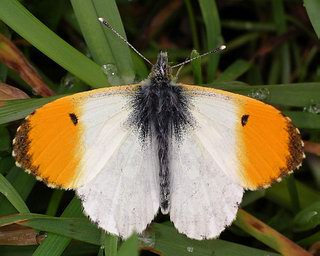
Male. Unmistakeable. No other butterfly has orange wing-tips. This one is caught in a spring shower - the raindrops frozen by the flash.
|
|
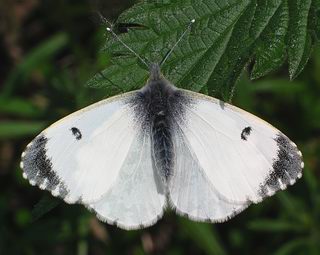
Female. Can be confused with other whites.
|
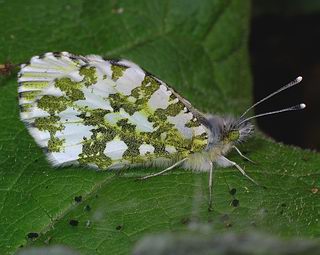
Green-patterned underside aids camouflage.
|
|
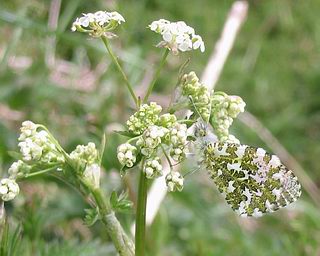
Male on Cow Parlsey showing effect of camouflage
|
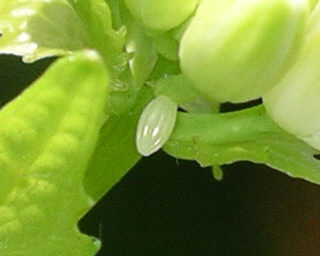
Newly-laid egg is white.
|
|
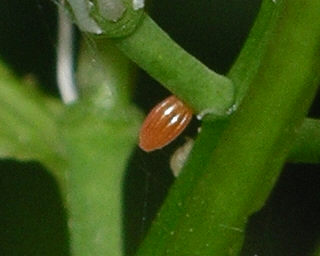
Egg matures to a deep orange.
|
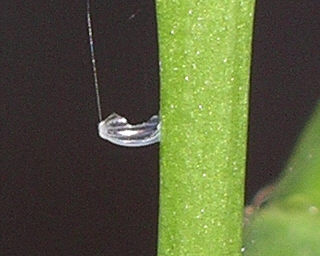
Empty eggshell, half eaten by newly emerged larva. The egg hatches about a week after being laid.
|
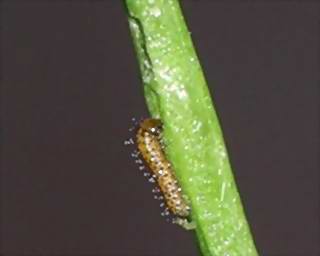
The first tiny instar (1mm long) grazing on a developing garlic mustard seedpod.
|
|
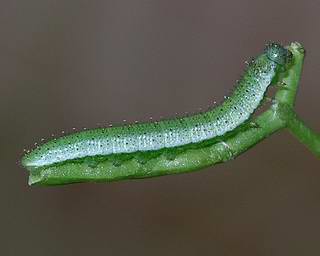
A later instar. Colour has changed to a counter-shaded green. When lit from above in the wild the lighter underside is in shadow and the whole larva appears flatter and less obvious to predators.
|
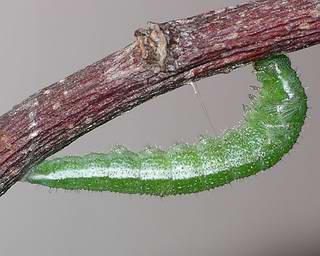
The larva beginning to transform into a pupa.
|
|
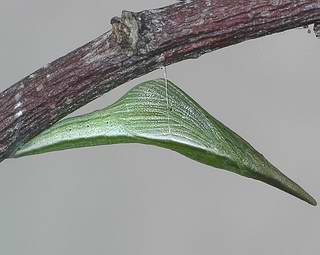
Transformation complete. This pupa was formed only 20 days after the egg was found.
|